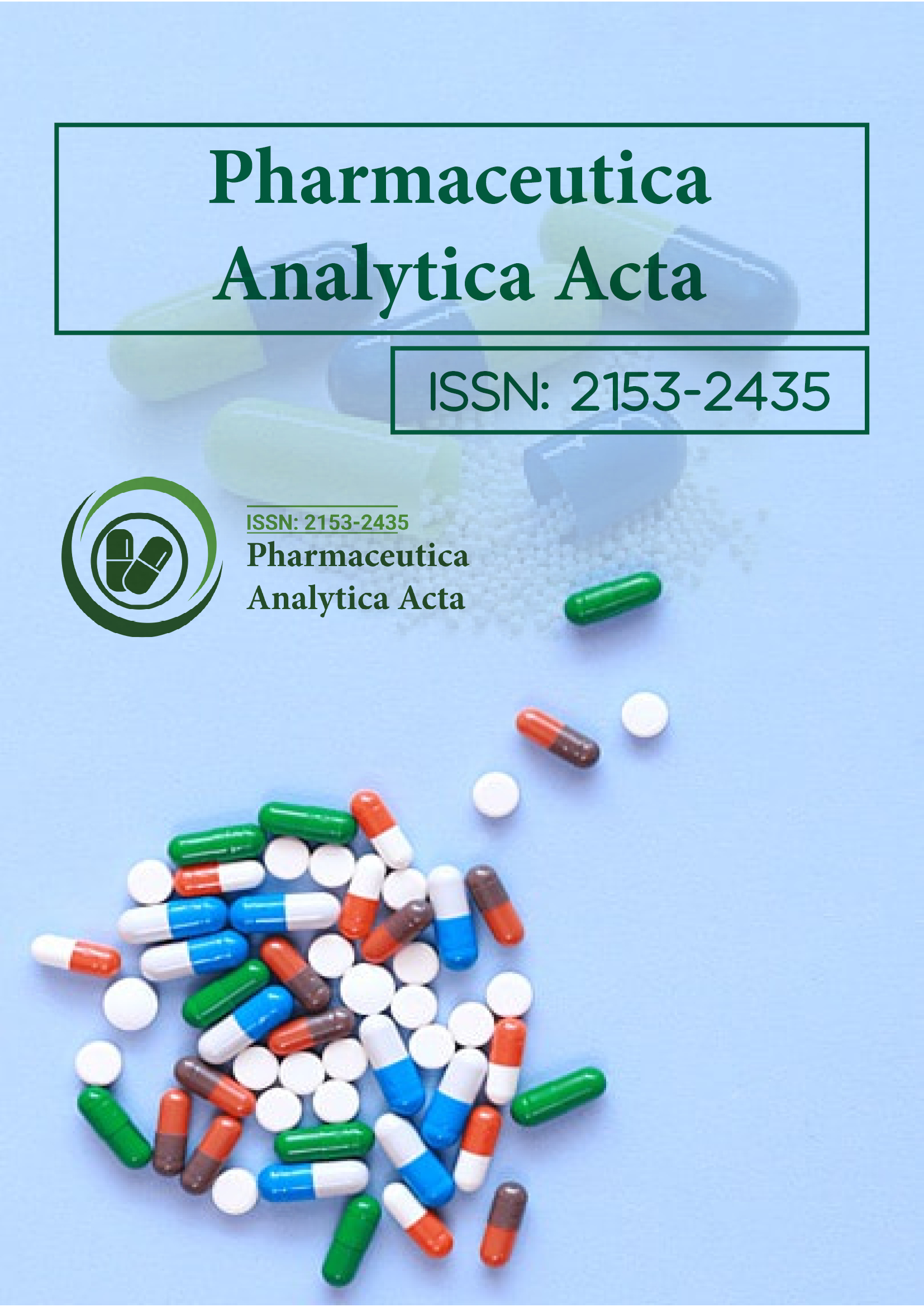Я«ЋЯ»ЂЯ«▒Я«┐Я«»Я«┐Я«ЪЯ«фЯ»ЇЯ«фЯ«ЪЯ»ЇЯ«ЪЯ«цЯ»Ђ
- Я«юЯ»є Я«ЋЯ»ЄЯ«ЪЯ»Ї Я«цЯ«┐Я«▒Я«ЋЯ»ЇЯ«ЋЯ«хЯ»ЂЯ««Я»Ї
- Я«юЯ»єЯ«ЕЯ««Я«┐Я«ЋЯ»ЇЯ«ИЯ»Ї Я«юЯ«░Я»ЇЯ«ЕЯ«▓Я»ЇЯ«џЯ»ђЯ«ЋЯ»Ї
- Я«ЋЯ«▓Я»ЇЯ«хЯ«┐ Я«хЯ«┐Я«џЯ»ѕЯ«ЋЯ«│Я»Ї
- JournalTOCЯ«ЋЯ«│Я»Ї
- Я«ЅЯ«▓Я«ЋЯ«│Я«ЙЯ«хЯ«┐Я«» Я«цЯ«ЙЯ«ЋЯ»ЇЯ«ЋЯ«ЋЯ»Ї Я«ЋЯ«ЙЯ«░Я«БЯ«┐ (GIF)
- Я«џЯ»ђЯ«ЕЯ«ЙЯ«хЯ«┐Я«ЕЯ»Ї Я«цЯ»ЄЯ«џЯ«┐Я«» Я«ЁЯ«▒Я«┐Я«хЯ»Ђ Я«ЅЯ«│Я»ЇЯ«ЋЯ«ЪЯ»ЇЯ«ЪЯ««Я»ѕЯ«фЯ»ЇЯ«фЯ»Ђ (CNKI)
- Ulrich's Periodicals Directory
- RefSeek
- Я«╣Я««Я»ЇЯ«ЪЯ«ЙЯ«░Я»ЇЯ«ЪЯ»Ї Я«фЯ«▓Я»ЇЯ«ЋЯ«▓Я»ѕЯ«ЋЯ»ЇЯ«ЋЯ«┤Я«ЋЯ««Я»Ї
- EBSCO AZ
- OCLC- WorldCat
- Я«фЯ«фЯ»ЇЯ«│Я«ЙЯ«ЕЯ»ЇЯ«ЋЯ«│Я»Ї
- Я««Я«░Я»ЂЯ«цЯ»ЇЯ«цЯ»ЂЯ«хЯ«ЋЯ»Ї Я«ЋЯ«▓Я»ЇЯ«хЯ«┐ Я««Я«▒Я»ЇЯ«▒Я»ЂЯ««Я»Ї Я«єЯ«░Я«ЙЯ«»Я»ЇЯ«џЯ»ЇЯ«џЯ«┐Я«ЋЯ»ЇЯ«ЋЯ«ЙЯ«Е Я«юЯ»єЯ«ЕЯ»ђЯ«хЯ«Й Я«ЁЯ«▒Я«ЋЯ»ЇЯ«ЋЯ«ЪЯ»ЇЯ«ЪЯ«│Я»ѕ
- Я«»Я»ѓЯ«░Я»І Я«фЯ«фЯ»Ї
- Я«ЋЯ»ѓЯ«ЋЯ»ЂЯ«│Я»Ї Я«ИЯ»ЇЯ«ЋЯ«ЙЯ«▓Я«░Я»Ї
Я«фЯ«»Я«ЕЯ»ЂЯ«│Я»ЇЯ«│ Я«ЄЯ«БЯ»ѕЯ«фЯ»ЇЯ«фЯ»ЂЯ«ЋЯ«│Я»Ї
- Я«еЯ»ІЯ«ЋЯ»ЇЯ«ЋЯ««Я»Ї Я««Я«▒Я»ЇЯ«▒Я»ЂЯ««Я»Ї Я«еЯ»ІЯ«ЋЯ»ЇЯ«ЋЯ««Я»Ї
- Я«џЯ«Ћ Я««Я«цЯ«┐Я«фЯ»ЇЯ«фЯ«ЙЯ«»Я»ЇЯ«хЯ»Ђ Я«џЯ»єЯ«»Я«▓Я»ЇЯ««Я»ЂЯ«▒Я»ѕ
- Я«ЁЯ«ЪЯ»ЇЯ«ЪЯ«хЯ«БЯ»ѕЯ«фЯ»ЇЯ«фЯ«ЪЯ»ЂЯ«цЯ»ЇЯ«цЯ»ЂЯ«цЯ«▓Я»Ї Я««Я«▒Я»ЇЯ«▒Я»ЂЯ««Я»Ї Я«ЋЯ«ЙЯ«фЯ»ЇЯ«фЯ«ЋЯ«фЯ»ЇЯ«фЯ«ЪЯ»ЂЯ«цЯ»ЇЯ«цЯ»ЂЯ«цЯ«▓Я»Ї
- Я«фЯ»іЯ«░Я»ЂЯ«│Я«ЪЯ«ЋЯ»ЇЯ«ЋЯ««Я»Ї
- Я«ЋЯ»ѕЯ«»Я»єЯ«┤Я»ЂЯ«цЯ»ЇЯ«цЯ»ЂЯ«фЯ»Ї Я«фЯ«┐Я«░Я«цЯ«┐Я«»Я»ѕ Я«џЯ««Я«░Я»ЇЯ«фЯ»ЇЯ«фЯ«┐Я«ЋЯ»ЇЯ«ЋЯ«хЯ»ЂЯ««Я»Ї
- Я«ЅЯ«ЎЯ»ЇЯ«ЋЯ«│Я»Ї Я«ЋЯ«ЙЯ«ЋЯ«┐Я«цЯ«цЯ»ЇЯ«цЯ»ѕЯ«ЋЯ»Ї Я«ЋЯ«БЯ»ЇЯ«ЋЯ«ЙЯ«БЯ«┐Я«ЋЯ»ЇЯ«ЋЯ«хЯ»ЂЯ««Я»Ї
Я«ЄЯ«еЯ»ЇЯ«цЯ«фЯ»Ї Я«фЯ«ЋЯ»ЇЯ«ЋЯ«цЯ»ЇЯ«цЯ»ѕЯ«фЯ»Ї Я«фЯ«ЋЯ«┐Я«░Я«хЯ»ЂЯ««Я»Ї
Я«юЯ«░Я»ЇЯ«ЕЯ«▓Я»Ї Я«ЃЯ«фЯ»ЇЯ«│Я»ѕЯ«»Я«░Я»Ї

Я«ЁЯ«БЯ»ЂЯ«ЋЯ«▓Я»Ї Я«ЄЯ«цЯ«┤Я»ЇЯ«ЋЯ«│Я»ѕЯ«цЯ»Ї Я«цЯ«┐Я«▒Я«ЋЯ»ЇЯ«ЋЯ«хЯ»ЂЯ««Я»Ї
- Я«ЅЯ«БЯ«хЯ»Ђ Я««Я«▒Я»ЇЯ«▒Я»ЂЯ««Я»Ї Я«іЯ«ЪЯ»ЇЯ«ЪЯ«џЯ»ЇЯ«џЯ«цЯ»ЇЯ«цЯ»Ђ
- Я«ЅЯ«»Я«┐Я«░Я»ЇЯ«хЯ»ЄЯ«цЯ«┐Я«»Я«┐Я«»Я«▓Я»Ї
- Я«ЋЯ«ЙЯ«▓Я»ЇЯ«еЯ«ЪЯ»ѕ Я«ЁЯ«▒Я«┐Я«хЯ«┐Я«»Я«▓Я»Ї
- Я«џЯ»ЂЯ«▒Я»ЇЯ«▒Я»ЂЯ«џЯ»ЇЯ«џЯ»ѓЯ«┤Я«▓Я»Ї Я«ЁЯ«▒Я«┐Я«хЯ«┐Я«»Я«▓Я»Ї
- Я«еЯ«░Я««Я»ЇЯ«фЯ«┐Я«»Я«▓Я»Ї & Я«ЅЯ«│Я«хЯ«┐Я«»Я«▓Я»Ї
- Я«еЯ«░Я»ЇЯ«џЯ«┐Я«ЎЯ»Ї & Я«╣Я»єЯ«▓Я»ЇЯ«цЯ»Ї Я«ЋЯ»ЄЯ«░Я»Ї
- Я«еЯ»ІЯ«»Я»єЯ«цЯ«┐Я«░Я»ЇЯ«фЯ»ЇЯ«фЯ»Ђ Я««Я«▒Я»ЇЯ«▒Я»ЂЯ««Я»Ї Я«еЯ»ЂЯ«БЯ»ЇЯ«БЯ»ЂЯ«»Я«┐Я«░Я«┐Я«»Я«▓Я»Ї
- Я«фЯ«»Я»І Я«ЄЯ«ЕЯ»ЇЯ«ЃЯ«фЯ«░Я»ЇЯ««Я»ЄЯ«ЪЯ«┐Я«ЋЯ»ЇЯ«ИЯ»Ї & Я«џЯ«┐Я«ИЯ»ЇЯ«ЪЯ««Я»ЇЯ«ИЯ»Ї Я«фЯ«»Я«ЙЯ«▓Я«юЯ«┐
- Я«фЯ»іЯ«цЯ»Ђ Я«ЁЯ«▒Я«┐Я«хЯ«┐Я«»Я«▓Я»Ї
- Я«фЯ»іЯ«░Я»ЂЯ«│Я»Ї Я«ЁЯ«▒Я«┐Я«хЯ«┐Я«»Я«▓Я»Ї
- Я«фЯ»іЯ«▒Я«┐Я«»Я«┐Я«»Я«▓Я»Ї
- Я««Я«░Я«фЯ«┐Я«»Я«▓Я»Ї & Я««Я»ѓЯ«▓Я«ЋЯ»ЇЯ«ЋЯ»ѓЯ«▒Я»Ђ Я«ЅЯ«»Я«┐Я«░Я«┐Я«»Я«▓Я»Ї
- Я««Я«░Я»ЂЯ«цЯ»ЇЯ«цЯ»ЂЯ«х Я«ЁЯ«▒Я«┐Я«хЯ«┐Я«»Я«▓Я»Ї
- Я««Я«░Я»ЂЯ«цЯ»ЇЯ«цЯ»ЂЯ«х Я«ЁЯ«▒Я«┐Я«хЯ«┐Я«»Я«▓Я»Ї
- Я««Я«░Я»ЂЯ«еЯ»ЇЯ«цЯ»Ђ Я«ЁЯ«▒Я«┐Я«хЯ«┐Я«»Я«▓Я»Ї
- Я«хЯ«БЯ«┐Я«Ћ Я««Я»ЄЯ«▓Я«ЙЯ«БЯ»ЇЯ««Я»ѕ
- Я«хЯ«┐Я«хЯ«џЯ«ЙЯ«»Я««Я»Ї Я««Я«▒Я»ЇЯ«▒Я»ЂЯ««Я»Ї Я««Я»ђЯ«ЕЯ»Ї Я«хЯ«│Я«░Я»ЇЯ«фЯ»ЇЯ«фЯ»Ђ
- Я«хЯ»ЄЯ«цЯ«┐Я«»Я«┐Я«»Я«▓Я»Ї
Я«џЯ»ЂЯ«░Я»ЂЯ«ЋЯ»ЇЯ«ЋЯ««Я»Ї
Я«фЯ»ѓЯ«џЯ«БЯ«┐ Я«фЯ«┤Я«цЯ»ЇЯ«цЯ«┐Я«ЕЯ»Ї Я«хЯ»єЯ«хЯ»ЇЯ«хЯ»ЄЯ«▒Я»Ђ Я«фЯ«ЋЯ»ЂЯ«цЯ«┐Я«ЋЯ«│Я«┐Я«▓Я»Ї Я«ЋЯ«░Я»ІЯ«ЪЯ»ЇЯ«ЪЯ«┐Я«ЕЯ«ЙЯ«»Я»ЇЯ«ЪЯ»Ђ Я«ЅЯ«│Я»ЇЯ«│Я«ЪЯ«ЋЯ»ЇЯ«ЋЯ««Я»Ї
Я«хЯ»ІЯ«▓Я»єЯ«ЋЯ»ЇЯ«ЕЯ«Й Я«еЯ«юЯ»ЇЯ««Я«Й
Я«фЯ»ѓЯ«џЯ«БЯ«┐ Я«ЁЯ«цЯ«ЕЯ»Ї Я««Я«░Я»ЂЯ«цЯ»ЇЯ«цЯ»ЂЯ«х Я«еЯ«ЕЯ»ЇЯ««Я»ѕЯ«ЋЯ«│Я»Ї Я«ЋЯ«ЙЯ«░Я«БЯ««Я«ЙЯ«Ћ Я«ЈЯ«▒Я»ЇЯ«▒Я»ЂЯ«ЋЯ»ЇЯ«ЋЯ»іЯ«│Я»ЇЯ«│Я«фЯ»ЇЯ«фЯ«ЪЯ»ЂЯ«ЋЯ«┐Я«▒Я«цЯ»Ђ
Я«ЋЯ«░Я»ІЯ«ЪЯ»ЇЯ«ЪЯ«┐Я«ЕЯ«ЙЯ«»Я»ЇЯ«ЪЯ»Ђ Я«ЅЯ«│Я»ЇЯ«│Я«ЪЯ«ЋЯ»ЇЯ«ЋЯ««Я»Ї. Я«ЋЯ«░Я»ІЯ«ЪЯ»ЇЯ«ЪЯ«┐Я«ЕЯ«ЙЯ«»Я»ЇЯ«ЪЯ»ЂЯ«ЋЯ«│Я»Ї Я««Я«░Я»ЂЯ«еЯ»ЇЯ«цЯ»ЂЯ«ЋЯ«│Я»ЂЯ«ЪЯ«ЕЯ»Ї Я«ЅЯ«»Я«┐Я«░Я«┐Я«»Я«ЋЯ»ЇЯ«ЋЯ«ЋЯ»Ї Я«ЋЯ«▓Я«хЯ»ѕЯ«»Я«ЙЯ«ЋЯ»ЂЯ««Я»Ї
Я«цЯ«┐Я«▒Я«ЕЯ»Ї. Я«ЋЯ«░Я»ІЯ«ЪЯ»ЇЯ«ЪЯ«┐Я«ЕЯ«ЙЯ«»Я»ЇЯ«ЪЯ»Ђ Я«ЋЯ«▓Я«хЯ»ѕ, Я«јЯ«ЪЯ»ЂЯ«цЯ»ЇЯ«цЯ»ЂЯ«ЋЯ»ЇЯ«ЋЯ«ЙЯ«ЪЯ»ЇЯ«ЪЯ«ЙЯ«Ћ,
α
- Я«ЋЯ«░Я»ІЯ«ЪЯ»ЇЯ«ЪЯ«┐Я«ЕЯ»Ї Я««Я«▒Я»ЇЯ«▒Я»ЂЯ««Я»Ї
β
- Я«ЋЯ«░Я»ІЯ«ЪЯ»ЇЯ«ЪЯ«┐Я«ЕЯ»Ї Я«фЯ»ЇЯ«░Я»ІЯ«хЯ«┐Я«ЪЯ««Я«┐Я«ЕЯ«ЙЯ«Ћ Я«фЯ«цЯ«┐Я«▓Я«│Я«┐Я«ЋЯ»ЇЯ«ЋЯ«┐Я«▒Я«цЯ»Ђ. Я«њЯ«░Я»Ђ Я««Я«ЕЯ«┐Я«ц Я«ЅЯ«ЪЯ«▓Я«┐Я«▓Я»Ї, Я«ЁЯ«цЯ»Є Я«еЯ»ЄЯ«░Я«цЯ»ЇЯ«цЯ«┐Я«▓Я»Ї Я«▓Я»ЂЯ«ЪЯ»ђЯ«ЕЯ»Ї
Я««Я«▒Я»ЇЯ«▒Я»ЂЯ««Я»Ї zeaxanthin Я««Я«ЙЯ«ЋЯ»ЂЯ«▓Я«░Я»Ї Я«еЯ«┐Я«┤Я«▓Я«┐Я«ЕЯ»Ї Я«ЄЯ«░Я«БЯ»ЇЯ«ЪЯ»Ђ Я«ЋЯ»ЂЯ«▒Я«┐Я«фЯ»ЇЯ«фЯ«┐Я«ЪЯ«цЯ»ЇЯ«цЯ«ЋЯ»ЇЯ«Ћ Я«фЯ«┐Я«░Я«┐Я«хЯ»ЂЯ«ЋЯ«│Я«ЙЯ«ЋЯ»ЂЯ««Я»Ї
Я«хЯ«┐Я«┤Я«┐Я«цЯ»ЇЯ«цЯ«┐Я«░Я»ѕЯ«»Я«┐Я«ЕЯ»Ї. Я«фЯ«▓ Я«фЯ«░Я«еЯ»ЇЯ«ц Я«єЯ«»Я»ЇЯ«хЯ»ЂЯ«ЋЯ«│Я»Ї Я«џЯ»єЯ«»Я»ЇЯ«»Я«фЯ»ЇЯ«фЯ«ЪЯ»ЇЯ«ЪЯ»ЂЯ«│Я»ЇЯ«│Я«Е
Я«єЯ«░Я»ІЯ«ЋЯ»ЇЯ«ЋЯ«┐Я«»Я«цЯ»ЇЯ«цЯ»ѕ Я««Я»ЄЯ««Я»ЇЯ«фЯ«ЪЯ»ЂЯ«цЯ»ЇЯ«ц Я«ЄЯ«еЯ»ЇЯ«ц Я«ЋЯ«▓Я«хЯ»ѕЯ«ЋЯ«│Я«┐Я«ЕЯ»Ї Я«еЯ«ЕЯ»ЇЯ««Я»ѕЯ«ЋЯ«│Я»ѕ Я«ЋЯ«░Я»ЂЯ«цЯ»ЇЯ«цЯ«┐Я«▓Я»Ї Я«ЋЯ»іЯ«│Я»ЇЯ«│ Я«хЯ»ЄЯ«БЯ»ЇЯ«ЪЯ»ЂЯ««Я»Ї
Я««Я«ЕЯ«┐Я«ц Я«фЯ«»Я«ЕЯ»ЇЯ«фЯ«ЙЯ«ЪЯ»Ђ Я«ЁЯ«▓Я»ЇЯ«▓Я«цЯ»Ђ Я«хЯ«БЯ«┐Я«ЋЯ««Я«»Я««Я«ЙЯ«ЋЯ»ЇЯ«ЋЯ«▓Я»Ї Я«еЯ»ІЯ«ЋЯ»ЇЯ«ЋЯ«ЎЯ»ЇЯ«ЋЯ«│Я»ЂЯ«ЋЯ»ЇЯ«ЋЯ«ЙЯ«Ћ Я«еЯ«ЕЯ»ЇЯ««Я»ѕ.
Я«ЄЯ«еЯ»ЇЯ«ц Я«хЯ«┐Я«џЯ«ЙЯ«░Я«БЯ»ѕЯ«»Я«┐Я«ЕЯ»Ї Я«фЯ»ЂЯ«│Я»ЇЯ«│Я«┐ Я«ЋЯ«░Я»ІЯ«ЪЯ»ЇЯ«ЪЯ«┐Я«ЕЯ«ЙЯ«»Я»ЇЯ«ЪЯ»ѕ Я«ЁЯ«ЎЯ»ЇЯ«ЋЯ»ђЯ«ЋЯ«░Я«┐Я«фЯ»ЇЯ«фЯ«цЯ«ЙЯ«ЋЯ»ЂЯ««Я»Ї
Я««Я«▓Я»ЄЯ«џЯ«┐Я«»Я«ЙЯ«хЯ«┐Я«▓Я»Ї Я«ЅЯ«│Я»ЇЯ«│ Я«љЯ«еЯ»ЇЯ«цЯ»Ђ Я«цЯ«ЕЯ«┐Я«цЯ»ЇЯ«цЯ»ЂЯ«хЯ««Я«ЙЯ«Е Я«фЯ«┐Я«░Я«цЯ»ЄЯ«џЯ«ЎЯ»ЇЯ«ЋЯ«│Я«┐Я«▓Я«┐Я«░Я»ЂЯ«еЯ»ЇЯ«цЯ»Ђ Я«фЯ»ѓЯ«џЯ«БЯ«┐Я«ЋЯ»ЇЯ«ЋЯ«ЙЯ«»Я«┐Я«▓Я»Ї Я«ЅЯ«│Я»ЇЯ«│ Я«ЅЯ«│Я»ЇЯ«│Я«ЪЯ«ЋЯ»ЇЯ«ЋЯ««Я»Ї.
Я«ЄЯ«▓Я»ѕ Я«ЅЯ«БЯ«хЯ»ЂЯ«ЋЯ«│Я«┐Я«▓Я»Ї Я«ЅЯ«│Я»ЇЯ«│ Я«ЋЯ«░Я»ІЯ«ЪЯ»ЇЯ«ЪЯ«┐Я«ЕЯ«ЙЯ«»Я»ЇЯ«ЪЯ»Ђ Я«ЅЯ«│Я»ЇЯ«│Я«ЪЯ«ЋЯ»ЇЯ«ЋЯ««Я»Ї Я«ЋЯ»ЂЯ«▒Я«┐Я«фЯ»ЇЯ«фЯ«┐Я«ЪЯ»ЇЯ«Ъ Я«ЋЯ«ЙЯ«░Я«БЯ«цЯ»ЇЯ«цЯ«ЙЯ«▓Я»Ї Я««Я«ЙЯ«▒Я»ЂЯ«ЋЯ«┐Я«▒Я«цЯ»Ђ
Я«ЋЯ«ЙЯ«░Я«БЯ«┐Я«ЋЯ«│Я»Ї, Я«јЯ«ЪЯ»ЂЯ«цЯ»ЇЯ«цЯ»ЂЯ«ЋЯ»ЇЯ«ЋЯ«ЙЯ«ЪЯ»ЇЯ«ЪЯ«ЙЯ«Ћ, Я«хЯ«ЋЯ»ѕЯ«фЯ»ЇЯ«фЯ«ЪЯ»ЂЯ«цЯ»ЇЯ«цЯ«▓Я»Ї, Я«хЯ«│Я«░Я»ЇЯ«џЯ»ЇЯ«џЯ«┐ Я«еЯ«┐Я«▓Я»ѕ, Я«хЯ«│Я«┐Я««Я«БЯ»ЇЯ«ЪЯ«▓Я««Я»Ї
Я«ЁЯ«▓Я»ЇЯ«▓Я«цЯ»Ђ Я«фЯ»ЂЯ«хЯ«┐Я«»Я«┐Я«»Я«▓Я»Ї Я«ЅЯ«░Я»ЂЯ«хЯ«ЙЯ«ЋЯ»ЇЯ«ЋЯ««Я»Ї, Я«фЯ«»Я«ЕЯ»ЇЯ«фЯ«ЪЯ»ЂЯ«цЯ»ЇЯ«цЯ«фЯ»ЇЯ«фЯ«ЪЯ»ЂЯ««Я»Ї Я«цЯ«ЙЯ«хЯ«░Я«цЯ»ЇЯ«цЯ«┐Я«ЕЯ»Ї Я«њЯ«░Я»Ђ Я«фЯ«ЋЯ»ЂЯ«цЯ«┐, Я«ЋЯ«ЙЯ«▓Я«еЯ«┐Я«▓Я»ѕ
Я«ЋЯ«┐Я«░Я«ЙЯ««Я«фЯ»ЇЯ«фЯ»ЂЯ«▒ Я«ЅЯ«░Я»ЂЯ«хЯ«ЙЯ«ЋЯ»ЇЯ«ЋЯ«цЯ»ЇЯ«цЯ«┐Я«ЕЯ»Ї Я«фЯ»ІЯ«цЯ»Ђ Я«еЯ«┐Я«▓Я»ѕЯ««Я»ѕЯ«ЋЯ«│Я»Ї, Я«ЁЯ«▒Я»ЂЯ«хЯ«ЪЯ»ѕЯ«ЋЯ»ЇЯ«ЋЯ»ЂЯ«фЯ»Ї Я«фЯ«┐Я«ЕЯ»Ї Я«ЋЯ«хЯ«ЕЯ«┐Я«фЯ»ЇЯ«фЯ»Ђ, Я«цЯ«»Я«ЙЯ«░Я«┐Я«цЯ»ЇЯ«цЯ«▓Я»Ї,
Я««Я«▒Я»ЇЯ«▒Я»ЂЯ««Я»Ї Я«цЯ«┐Я«▒Я«ЕЯ»Ї Я«еЯ«┐Я«▓Я»ѕЯ««Я»ѕЯ«ЋЯ«│Я»Ї. Я«ЄЯ«еЯ»ЇЯ«ц Я«ЋЯ»ѓЯ«▒Я»ЂЯ«ЋЯ«│Я«┐Я«ЕЯ»Ї Я«фЯ«ЙЯ«░Я»ЇЯ«хЯ»ѕЯ«»Я«┐Я«▓Я»Ї, Я«еЯ«ЪЯ«хЯ«ЪЯ«┐Я«ЋЯ»ЇЯ«ЋЯ»ѕЯ«ЋЯ«│Я»Ї Я««Я»ЂЯ«ЪЯ«┐Я«»Я»ЂЯ««Я»Ї
Я«цЯ«ЕЯ«┐Я«фЯ»ЇЯ«фЯ«ЪЯ»ЇЯ«Ъ Я«ЋЯ«░Я»ІЯ«ЪЯ»ЇЯ«ЪЯ«┐Я«ЕЯ«ЙЯ«»Я»ЇЯ«ЪЯ»Ђ Я«ЃЯ«фЯ»ІЯ«ЋЯ«ИЯ»ЇЯ«ЋЯ«│Я»ѕ Я«хЯ»ЄЯ«▒Я»ЂЯ«фЯ«ЪЯ»ЂЯ«цЯ»ЇЯ«цЯ«┐ Я«ЁЯ«▒Я«┐Я«»Я«▓Я«ЙЯ««Я»Ї [1]. Я«ЄЯ«цЯ«┐Я«▓Я»Ї
Я«хЯ«┐Я«џЯ«ЙЯ«░Я«БЯ»ѕ, Я«ЋЯ«┐Я«│Я«еЯ»ЇЯ«цЯ«ЙЯ«ЕЯ»Ї, Я«цЯ»єЯ«░Я»єЯ«ЎЯ»ЇЯ«ЋЯ«ЙЯ«ЕЯ»Ђ, Я«фЯ»ЄЯ«░Я«ЙЯ«ЋЯ»Ї, Я«ЋЯ»єЯ«ЪЯ«ЙЯ«хЯ«┐Я«▓Я»Ї Я«ЄЯ«░Я»ЂЯ«еЯ»ЇЯ«цЯ»Ђ Я«фЯ»ѓЯ«џЯ«БЯ«┐Я«ЋЯ»ЇЯ«ЋЯ«ЙЯ«»Я»ЇЯ«ЋЯ«│Я»Ї
Я««Я«▒Я»ЇЯ«▒Я»ЂЯ««Я»Ї Я««Я»єЯ«│Я«ЋЯ«Й Я«ЅЯ«ЪЯ»ѕЯ«еЯ»ЇЯ«цЯ»Ђ Я«фЯ»ІЯ«ЕЯ«ЙЯ«░Я»ЇЯ«ЋЯ«│Я»Ї.